Water temperatures in lakes in England and Wales vary throughout the year, with weather conditions, with the size of the water body, and how it fills up with water, and at different levels in a large water body. In summer the upper level of water in lakes – the level where people swim – warms up noticeably, often well over 20°. This post dispels the inaccurate information about temperatures sometimes put out by authorities, and outlines the concerns about safety as a result of them doing so.
The answer is No, lakes in summer are not freezing cold; in fact they can be very warm, 20° and more, as can any sort of water body or lake, including ponds, quarries, reservoirs and other lakes, and slow-moving rivers.
Temperatures vary during the year, with weather conditions, and time of day (though will not be that different between a summer day and night). They can vary at different levels in a large water body, with cold water further down, but the top layer is where people swim, and this warms up and stays warm for longer than in rivers or the sea. Temperatures can reach well into the mid-20s° in the south and east of the country, and stay warm for longer than in rivers or the sea. Levels can mix and the top layer cool, but this is generally in autumn and winter. A shallow edge can be a couple of degrees warmer than further out.
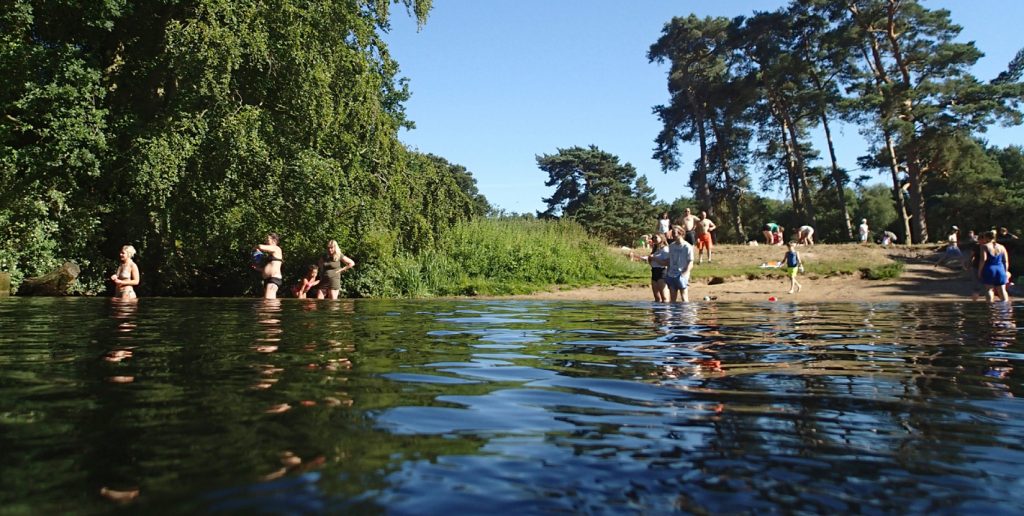
Myth
We see many authorities, landowners and some safety organisations stating (and this is being repeated in the media) that lakes, quarries, reservoirs and other inland waterways are “freezing”, or otherwise cold in summer in ways that defy the laws of physics:
“The average sea temperature around the UK and Ireland is just 12°C.Inland waters like lakes, rivers, lochs and reservoirs can be colder – even in the summer.” RNLI website
“Did you know the average UK sea temperature is just 12°C. Quarry lakes can be much colder than that, even in the summer.” MPA guidance for employees working with local communities
“The water in a reservoir never really gets above 11°C even on the hottest of days.” United Utilities info pack for teenagers 2022
This information is completely inaccurate. Inland waters are not below 11 or 12° in summer, as stated by these organisations.
And it is not that useful to know about the average for a year when thinking about what the temperature is in summer.
Facts – and why this misleading information matters
In fact, in summer lakes can often be considerably warmer than the statements suggest, which can be seen from temperature readings by swimmers and from other sources – and experienced by people getting into the water.
The water temperature in lakes in summer can often be well above 20°, and that applies to all different sorts of lakes whether they were once quarries or reservoirs or not.
It is unclear exactly why the inaccurate information is so widely circulated, and why it is stated by respectable and supposedly knowledgeable organisations such as the RNLI.
It often accompanies warnings about cold water shock and sometimes about swim failure, often with otherwise very sensible fact-based advice.
It is true that these are real risks, including in summer, and people do need to know how to stay safe when the water is colder than they might expect – especially if they’ve only swum in a heated indoor pool that could be 27-31° – (by not jumping in until used to the temperature including at lower depths, staying near to shore if not used to swimming outdoors, and knowing how to float if in trouble).
But saying something so clearly untrue can damage the credibility of those saying it and stop useful safety info getting across.
I am puzzled about why they do this. Is there some reason why those managing lakes don’t use a thermometer to inform them of the facts?
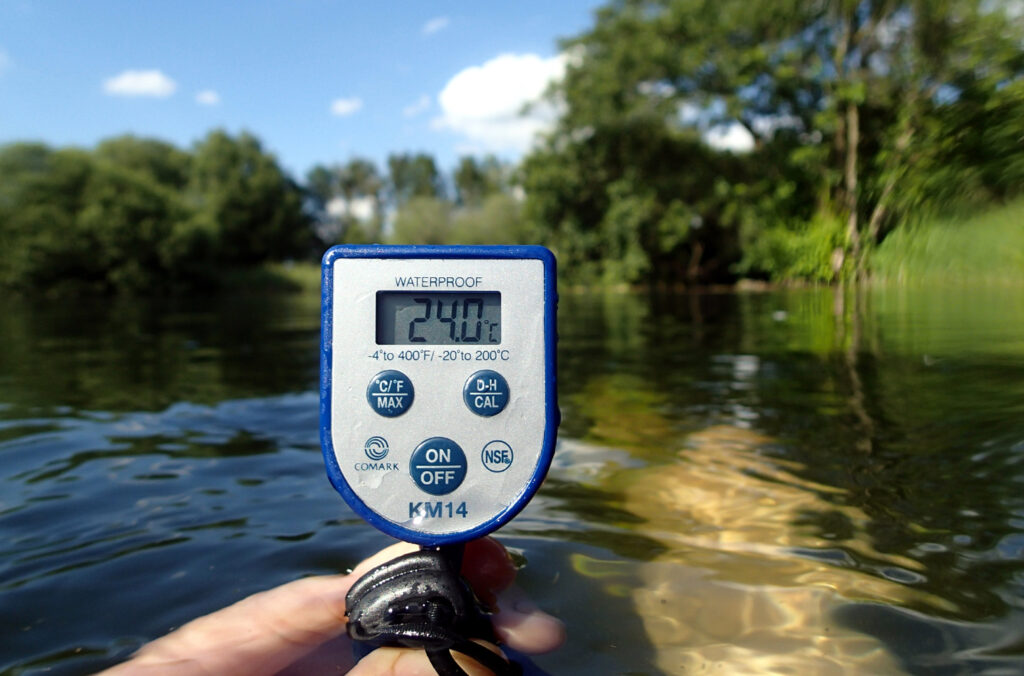
Trying to keep people out of water doesn’t work and in fact keeps people less safe
Some organisations might want to discourage people from getting into the water, and perhaps think that they will make it sound less pleasant. This is unlikely to work as people want to swim and will swim especially in summer, to cool off in hot weather or just to have fun. Research and behavioural science shows that negative and inaccurate scaremongering messaging doesn’t work and can even encourage people to behave more riskily. And it can alienate and cause resentment. None of this helps in promoting safety. It prevents people learning by experience about outdoor swimming and about taking responsibility for staying safe and teaching their children, too. Constructive and positive messaging and information can help people keep themselves safe more successfully.
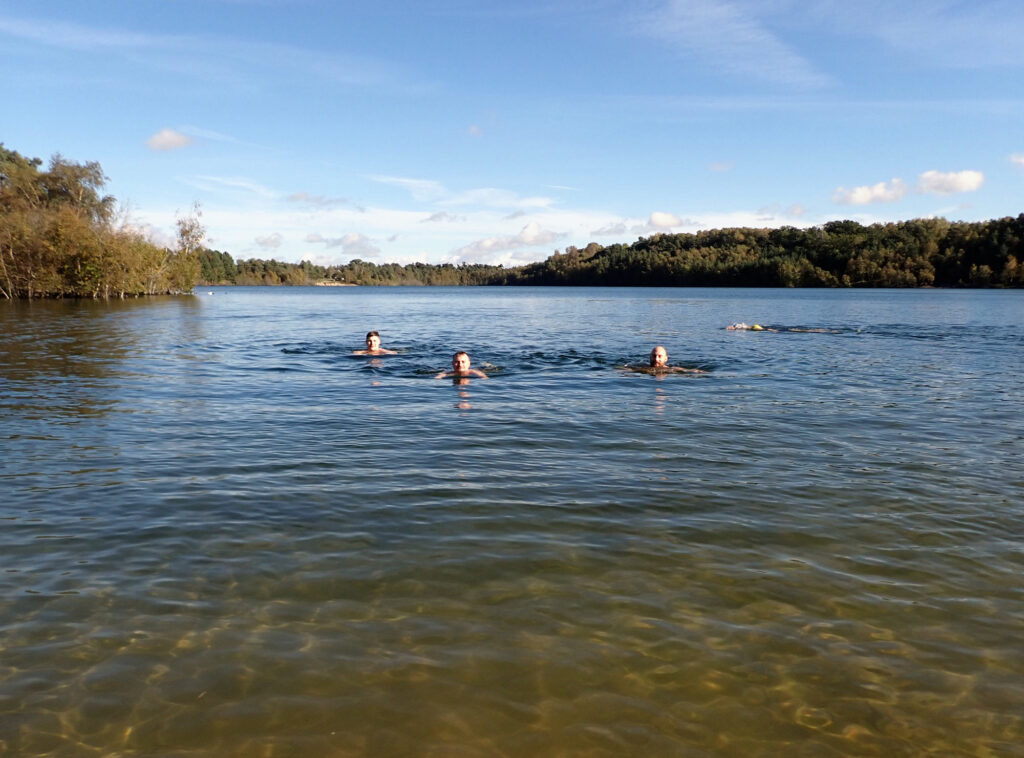
More about the temperatures of lakes in summer
The water temperature in lakes in summer can often be above 20°, reaching 25° in some hot summer days in the South and East of the country, and retaining those warm temperatures for longer into the autumn than the sea and fast moving rivers. The temperature will not drop much during the night in these large water bodies.
All still water bodies like lakes behave in a similar way, and that includes previous quarries and reservoirs (and slow-moving rivers). This can be affected by how the lake fills up with water (potentially cooler from a spring or stream, less cold from rainfall), but all will warm up in hot sunny weather.
In lakes there can be variation between layers. The top layer (of varying depths, potentially between half a metre and 15 m, deepest in larger water bodies) is the warmest in summer, and lower down is likely to be cooler, though most swimmers do not go below the surface layer. The larger the water body the more the upper layers mix and it warms and the deeper the warm level goes.
Jumping can potentially take you into a cooler layer, which is why it’s important to check how cool it is further down while checking the depth, and get used to the temperature first. In autumn and winter, the cooler layers of water can come to the top, depending on the weather, plus cool air can cool the surface, meaning that the part of the lake in which people swim lake can become cold and remain cold for longer than moving water such as rivers or the sea. Read about thermal layers on the OSS website.
Temperature reports
We know that the temperatures in lakes in summer can be warm or very warm because of reports from many swimmers who like to take and note the temperature using pretty accurate thermometers.

A colourful temperature crochet blanket by Sarah, Norfolk (all types of water body)
Some post them when sharing their swims, some put them in spreadsheets, some of them weave , knit or crochet scarves or blankets colour-coded for the water temperature! Some also include air temperature. I’ve seen one who has dyed the wool different colours using plants and water from her local river to create a beautiful scarf.
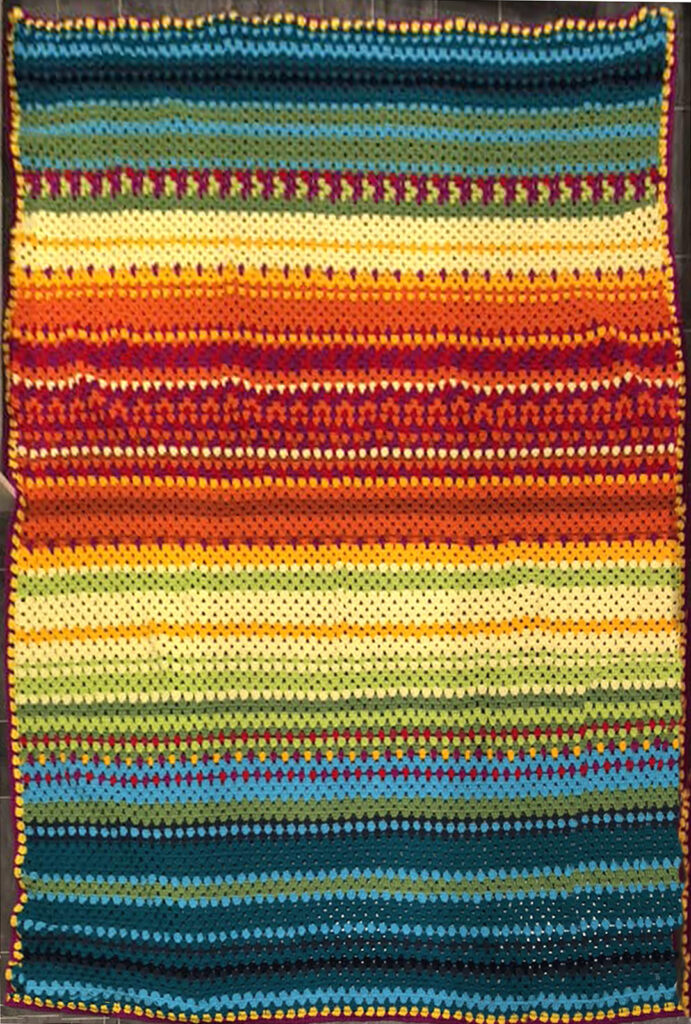
A colourful temperature crochet blanket by Amelia, Norfolk (all types of water body)
I have been recording water temperatures for over 10 years, the last six years organised in spreadsheets, and in recent years using coloured pencils to portray these. I’ve now discovered the wonders of conditional formatting in Excel (though that’s less fun than the pencils!)
I’ve separated out the lakes in my colour-coded spreadsheets and here they are for the last five years. Nearly all of the lakes are in East Anglia. Temperatures have been as high in Norfolk lakes as 23.5° in early September 2023, 23.7° mid-August 2022, 25.7° on 16 June 2021, and 24.6° on 9 August 2020, 24° in July 2019 (thermometer pictured). (I’ve also recorded very warm river temperatures in summer, in East Anglia, the south-east including the Thames – see below – well up in the mid-20s).
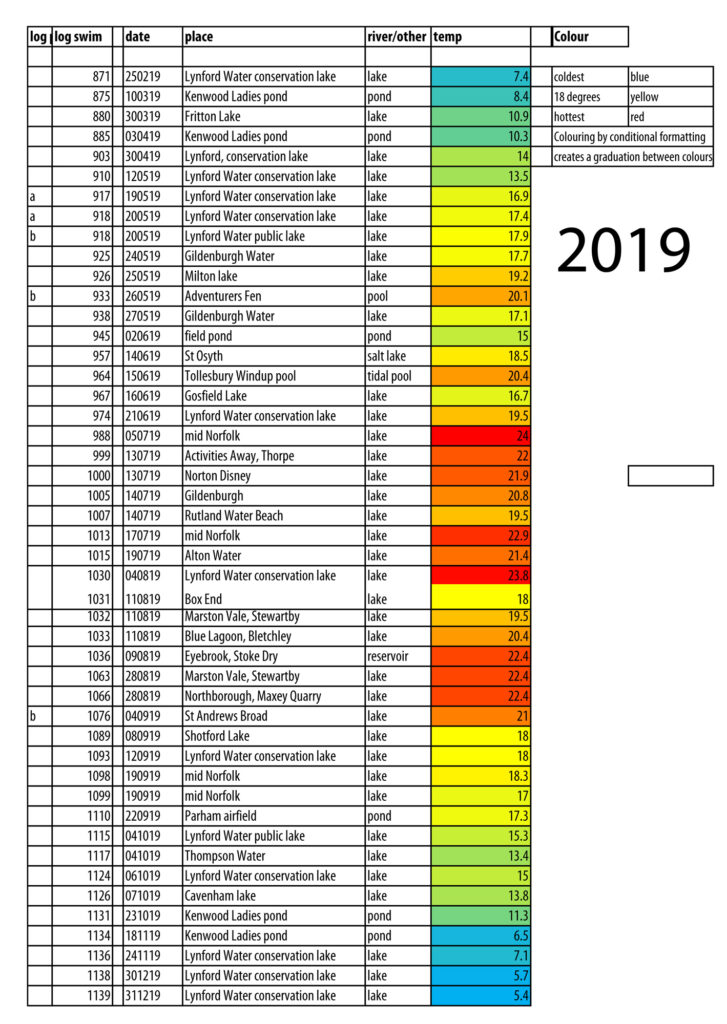
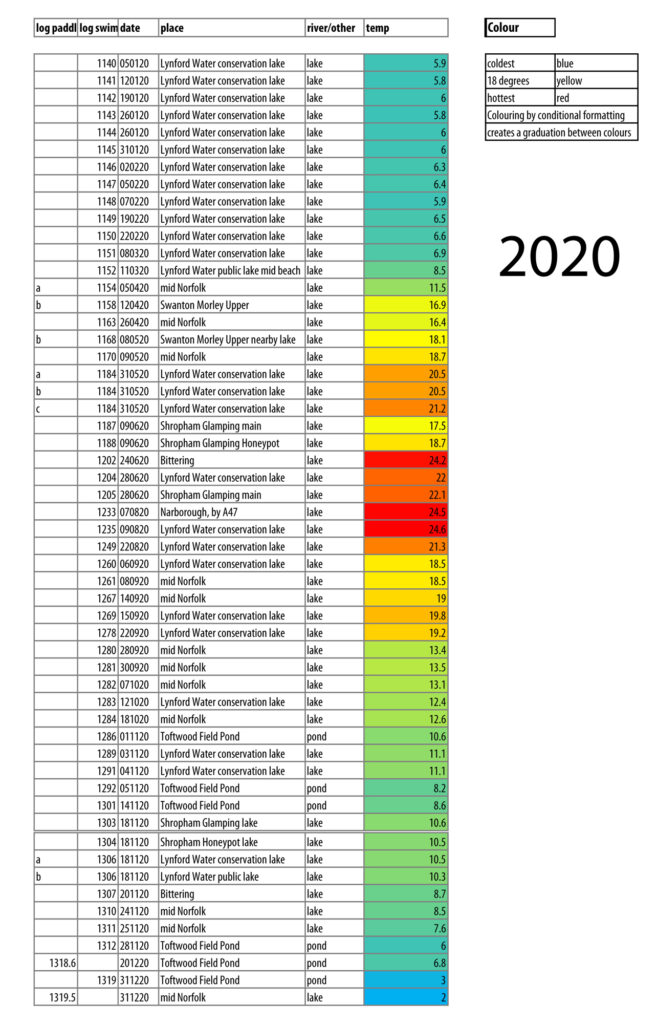
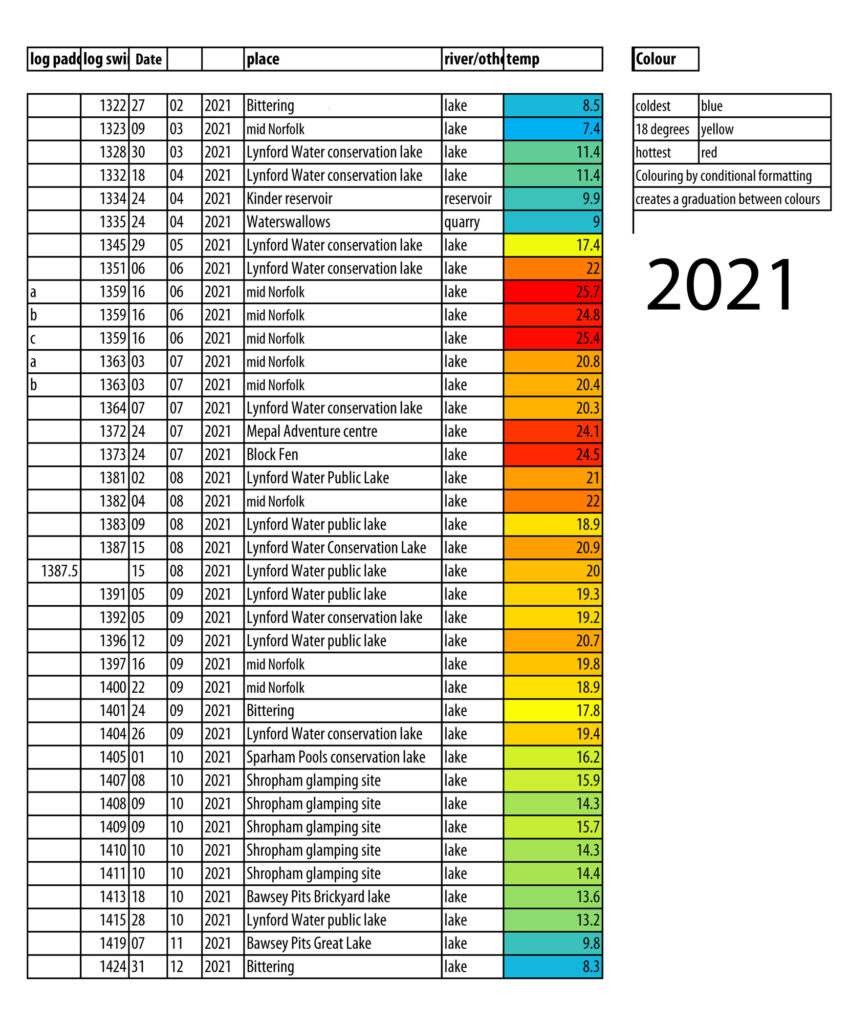
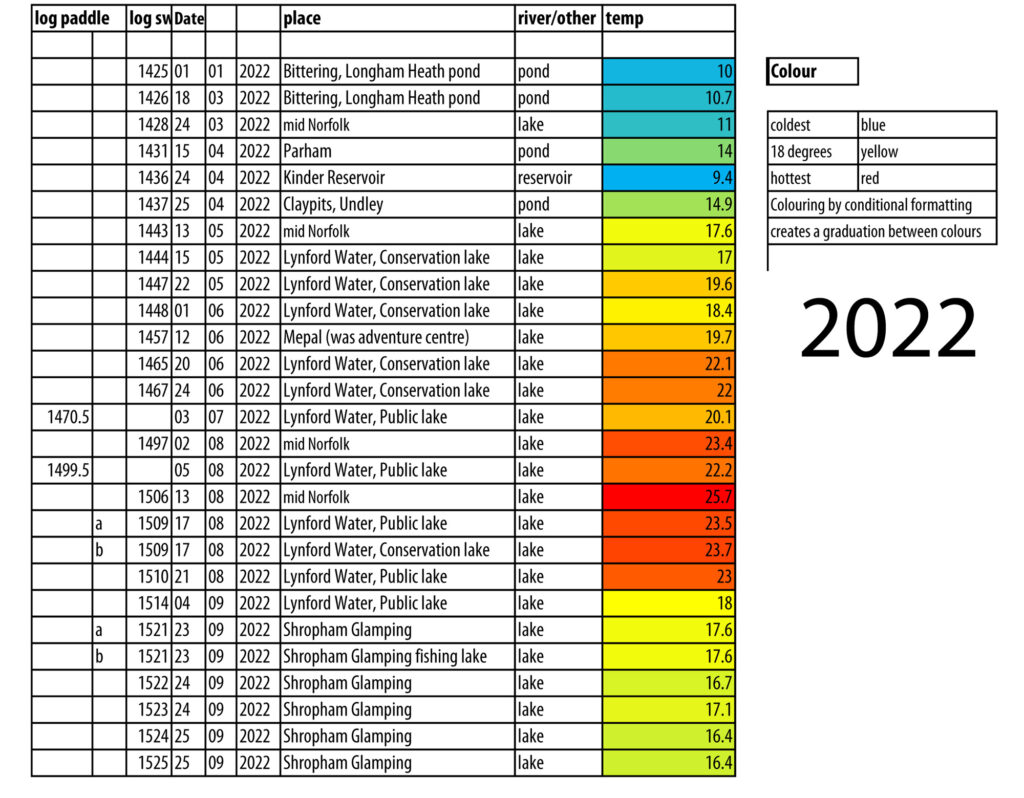
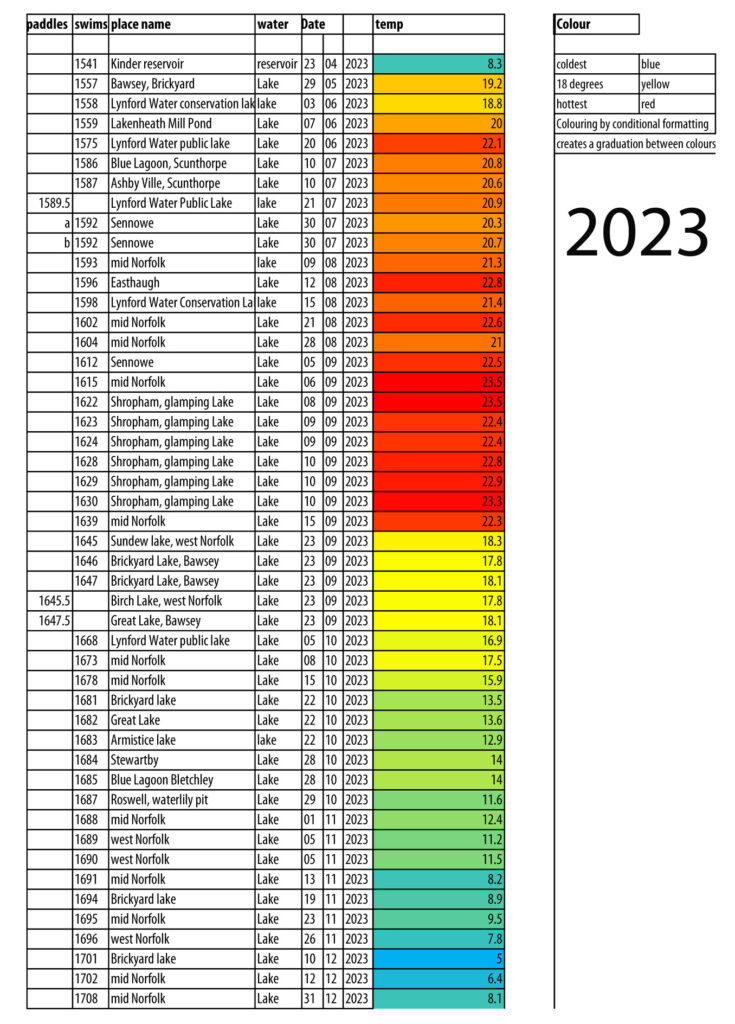
Is it true that the river Thames is colder than 12° in summer?
“Average UK and Ireland sea temperatures are just 12°C. Rivers such as the Thames are colder – even in the summer.” [my emphasis] RNLI, webpage on Safety: Know the risks: Cold water shock
No, it is not true that the river Thames is colder than 12° in summer. Here is the evidence I have personally gathered from swims in the Thames (and a few linked rivers) in summer 2016-2022.
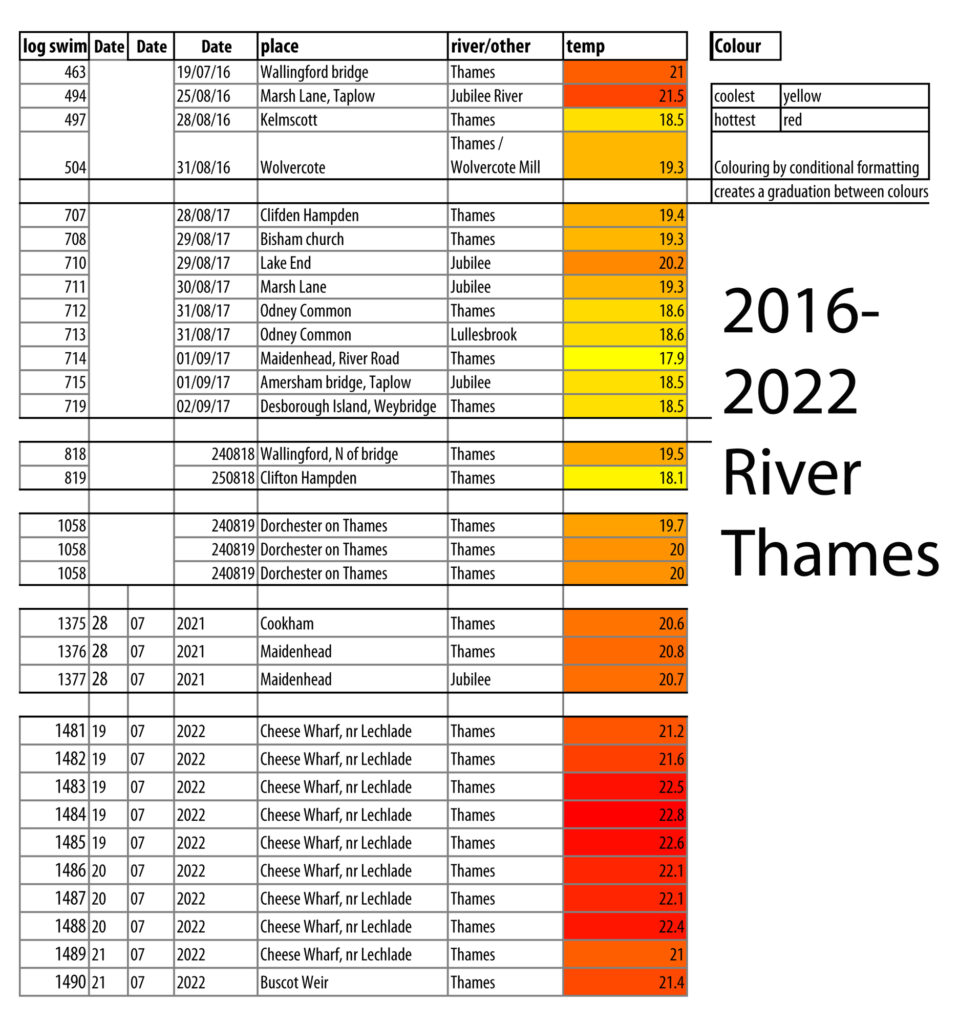
This article focuses on summer. To read about winter, see this page with info about Winter Dips – Cold Water Benefits and Safety (lakes)
